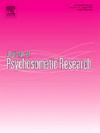Protecting young women's body image from appearance-based social media exposure: A comparative study of self-compassion writing and mindful breathing interventions
IF 3.5
2区 医学
Q2 PSYCHIATRY
引用次数: 0
Abstract
Objective
This study compared the effectiveness of self-compassion writing and mindful breathing in protecting body image after exposure to appearance-focused social media. It focused on individuals with high self-objectification and explored the underlying mechanisms and emotional benefits of these interventions.
Methods
A randomized controlled trial was conducted with 107 young females (17–25 years) assigned to self-compassion writing (n = 37), mindful breathing (n = 36), or control (n = 34) groups. Body dissatisfaction was induced using idealized body imagery, after which participants completed their respective interventions. State body image was measured at baseline, post-induction, and post-intervention. At the end of the study, a semi-structured interview was conducted, and the data were analyzed using Neff's self-compassion framework.
Results
A two-way ANOVA revealed a significant interaction effect between group and time point F (3.98, 207.15) = 8.45, p < 0.001, partial η2 = 0.140. Self-compassion writing through enhanced self-kindness improved state body image beyond baseline levels. Trait self-objectification moderated the efficacy of the intervention (∆R2 = 0.04, F (2,100) = 3.48, p = 0.035). Mediation analysis revealed that both interventions improved emotional state through body image enhancement (mediation effect size = 0.21).
Conclusions
Self-compassion writing demonstrated superior efficacy over mindful breathing, primarily through fostering self-kindness. Body image emerged as a critical mediator of emotion improvement, highlighting the value of mindfulness-based interventions in promoting body positivity and emotional resilience following appearance-based social media exposure.
保护年轻女性的身体形象免受基于外表的社交媒体曝光:自我同情写作和正念呼吸干预的比较研究
目的本研究比较了自我同情写作和正念呼吸在接触以外表为中心的社交媒体后保护身体形象的有效性。本研究以自我物化程度高的个体为研究对象,探讨了这些干预措施的潜在机制和情感效益。方法采用随机对照试验方法,将107名年轻女性(17-25岁)分为自我同情写作组(n = 37)、正念呼吸组(n = 36)和对照组(n = 34)。用理想化的身体意象诱导身体不满,之后参与者完成各自的干预。在基线、诱导后和干预后测量状态身体形象。在研究结束时,进行了半结构化访谈,并使用内夫的自我同情框架对数据进行了分析。结果双因素方差分析显示,组与时间点F (3.98, 207.15) = 8.45, p <;0.001,偏η2 = 0.140。自我同情写作通过增强自我仁慈改善状态身体形象超过基线水平。特质自我物化对干预效果有调节作用(∆R2 = 0.04, F (2100) = 3.48, p = 0.035)。中介分析显示,两种干预均通过增强身体形象改善情绪状态(中介效应值= 0.21)。结论:自我同情写作比正念呼吸更有效,主要是通过培养自我仁慈。身体形象成为情绪改善的关键中介,突出了基于正念的干预在促进基于外表的社交媒体曝光后身体积极性和情绪弹性方面的价值。
本文章由计算机程序翻译,如有差异,请以英文原文为准。
求助全文
约1分钟内获得全文
求助全文
来源期刊
CiteScore
7.40
自引率
6.40%
发文量
314
审稿时长
6.2 weeks
期刊介绍:
The Journal of Psychosomatic Research is a multidisciplinary research journal covering all aspects of the relationships between psychology and medicine. The scope is broad and ranges from basic human biological and psychological research to evaluations of treatment and services. Papers will normally be concerned with illness or patients rather than studies of healthy populations. Studies concerning special populations, such as the elderly and children and adolescents, are welcome. In addition to peer-reviewed original papers, the journal publishes editorials, reviews, and other papers related to the journal''s aims.

 求助内容:
求助内容: 应助结果提醒方式:
应助结果提醒方式:


